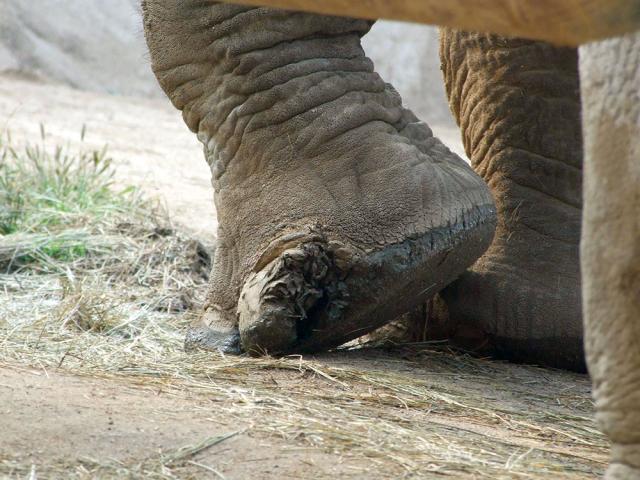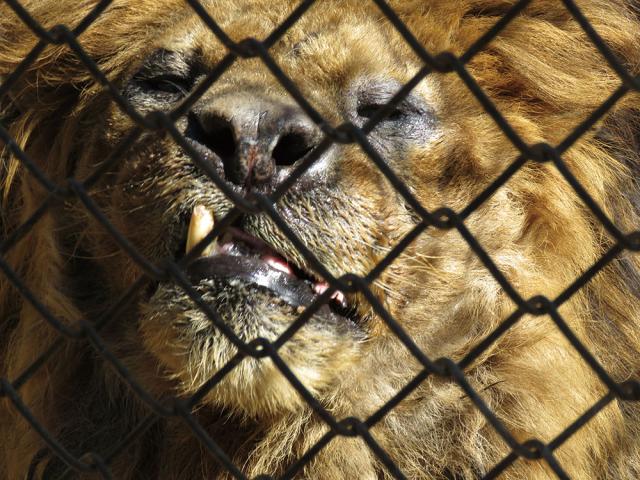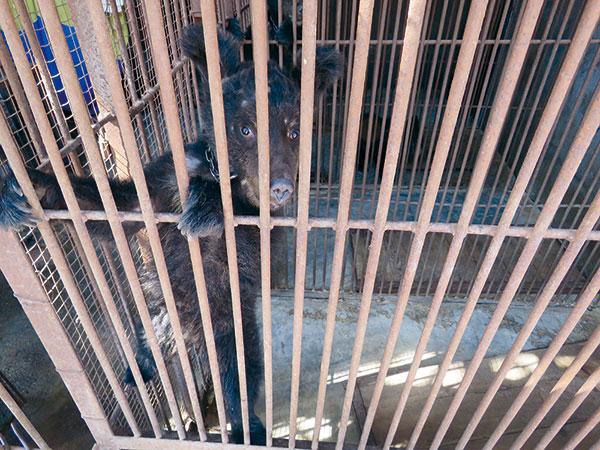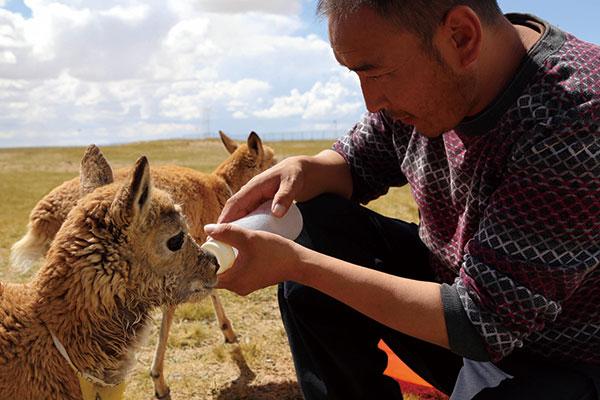China’s current Wildlife Protection Law (WPL) came into effect in 1989 and has long been criticized by wildlife advocates for promoting wildlife exploitation rather than protection. In late 2015, when a draft of an amendment to the WPL was released to solicit public opinion, immediately trigger heated debate and criticism from the general public. After two rounds of comments, China’s National People’s Congress passed the amendments in July this year and the new Wildlife Protection Law Amendment (WPLA) will come into effect on January 1, 2017.
For an expert view on the newly updated law, NewsChina interviewed ecologist Xie Yan, Associate Researcher at the Institute of Zoology of the Chinese Academy of Sciences and founder of conservation NGO Global Protected Area Friendly System.
While Xie says the law is a significant change, there still remain some ambiguities in the revision that might pose threats to wildlife, and require further clarification by relevant authorities.
NewsChina: What is the significance of the implementation of the WPLA?
Xie Yan: The importance of biodiversity has gained global recognition. Wildlife plays a key role in maintaining healthy ecological systems, and thus wildlife protection is no longer just for the sake of wildlife itself, but rather for the sake of the living environment of humanity.
In China, more and more people are beginning to realize the important role wildlife plays in the ecology as a whole. However, due to the increasing density of the human population and economic development, the demands on wildlife from the human world are increasing, such as the consumption of wild animals for food, using their body parts for traditional Chinese medicine, catching them to keep as domestic pets and poaching them for specimens and decorations and so on. The international trafficking in wildlife has jumped from the third to second largest illegal trade, second only to the trade in illegal drugs, which indicates the severity of the threat wildlife faces globally.
The 1989 Wildlife Protection Law defines wildlife under its protection as ‘precious, endangered land-based and aquatic wildlife species and land-based wildlife species of beneficial or important economic and scientific research value.’ Obviously, against the backdrop of the then low economic conditions and living standards in China, ensuring the exploitation of wildlife resources was the key purpose of protection efforts. This definition should be drastically different considering our present situation. Additionally, the List of Wild Animals Under National Protection drafted in 1989 is long out of date, and a lot of species under threat are not listed at all. So there is an urgent need to renew and update the list. Indeed, the call for amending China’s WPL started ten years ago by wildlife advocates across the world.
When you take all this into account, along with the international situation, the WPLA has been long anticipated.
NC: After two rounds of public comments, what are the positive changes in the WPLA?
XY: There are at least four major changes in the new WPL. First of all, the final version shows significant progress in the guiding principle for wildlife protection and the term ‘wildlife exploitation’ has been gradually removed. During the revision process, the term ‘exploitation of wildlife resources’ was a point of contention. For example, in the general provision, in describing the purpose of the law, the terms ‘maintaining biodiversity’ and ‘ecological balance’ replaced ‘economic value’ and ‘use of wildlife resources.’ This is indeed a significant step forward, which clarifies the goal for wildlife protection, from a legal perspective.
Secondly, unlike the old law that encouraged ‘captive breeding’ as well as allowing reasonable utilization of wildlife and hunting activities, the new law sees apparent changes in terms of playing down or limiting the role of ‘wildlife exploitation.’ Rather than encouraging utilization, the new law puts more emphasis on calling for strict management regulation on activities involving wildlife exploitation, which is indeed a significant step forward.
Thirdly, the amended law clarifies for the first time the principle of updating the List of Wild Animals Under National Protection once every five years. It is critical for our country to map out the new list as soon as possible. However, due to ongoing controversies on the listing of certain species whose populations have recovered due to captive breeding initiatives, there is no time frame for publishing a new list, as far as I know.
Last but not least, one of the focuses of the new WPL is the protection of wildlife habitats. The WPLA includes the concept of habitat conservation, stresses its importance, and emphasizes the strict and scientific protection of natural habitats, which was ignored in the previous law. The new law states which habitats and migration corridors between habitats are under protection, which is crucially important for wildlife protection in China, as for most protected areas habitat fragmentation is a major problem.
There are numerous other changes. For example, tougher regulations and punishments for wildlife protection law enforcement agencies if they fail in their responsibilities. Consuming foods made from protected wildlife will also be illegal after the new law is implemented, whereas before only the sale of such foods was illegal.
NC: Are there any inadequacies or disappointing aspects to the WPLA?
XY: A big loophole remains in the possible leaving of space to allow the existence of captive breeding programs of wild animals for commercial purposes, as well as the capturing of wild animals for these programs. The language legitimizes the use of wildlife for commercial purposes and encourages a consumerist attitude that stimulates demand for wildlife products. Consequently, if commercial exploitation is allowed in the form of the captive breeding of animals, the poaching of these species in the wild can hardly be effectively contained. A bad example of this that is already happening is the giant salamander, a species that breeds successfully in captivity, but remains on the brink of extinction in the wild due to continuous poaching.
NC: Does the WPLA contain provisions to prevent damage to wild animal populations caused by commercial captive breeding?
XY: In the detailed provisions, there are restrictions under a protected species list system. Firstly, not all species of wildlife can be legally bred in captivity for commercial purposes. The law allows the captive breeding of endangered species based on a certification system; secondly, scientific markings [DNA] are used to prove the origin of the animals used for captive breeding, which can ensure that they are not taken from the wild.
The list has not yet been released, since there is heated debate on whether the captive breeding for commercial purposes of any single species should be allowed. Some are of the opinion that if a species can be successfully reared through captive breeding, then they can be sold. I want to ask, does that mean that pandas in this sense can also be consumed? There should be a bottom line for human’s consumption of wildlife. We highly recommend that the authorities shorten the list of species that can be bred in captivity for commercial purposes.
NC: How does the WPLA manage to avoid harm to wildlife when it allows the ‘utilization’, through captive breeding, of wildlife for medicine?
XY: There is no legal difference between the exploitation of wildlife in medicine or any other kinds of exploitation. The additional requirements for medicinal use in the more detailed provision of the WPLA, however, state that the activity should adhere to pharmaceutical management rules and regulations.
NC: Is there any breakthrough in animal welfare in the WPLA?
XY: The new WPL still does not mention ‘animal welfare’ directly. In most developed countries, there are animal welfare laws along with designated standards and management regulations. However, the term has only recently entered China, and the general public is not aware of the issue of whether animals in captivity suffer distress, abuse or psychological harm. Despite this, in the WPLA, for the first time in Chinese law, we see an item stating ‘prohibit the mistreatment of animals’, which is a good sign. But ‘mistreatment’ is a vague term that’s difficult to define and there are no standards in theory or practice for evaluating it. This is an expression of the wish to keep wild animals from physical or mental abuse.
For example, it has been revealed that the wild animals at
Badaling Wildlife World [a safari park near Beijing] do not receive proper treatment when suffering from various diseases. This is mistreatment of wildlife for sure. At present, the WPLA needs to map out a detailed implementation of regulations and clarify actions and degrees that are used for creating parameters for the ‘treatment’ category.
The [success of the] new WPL will depend on the implementation of regulations to secure its effects, and China’s Forestry Department is in charge of drafting these. The date of the enforcement of regulations remains unclear, and all that we, as academics or wildlife conservationists, can do is prepare and give our suggestions later during the public consultation process.

 Old Version
Old Version








